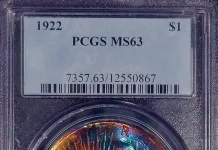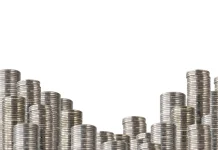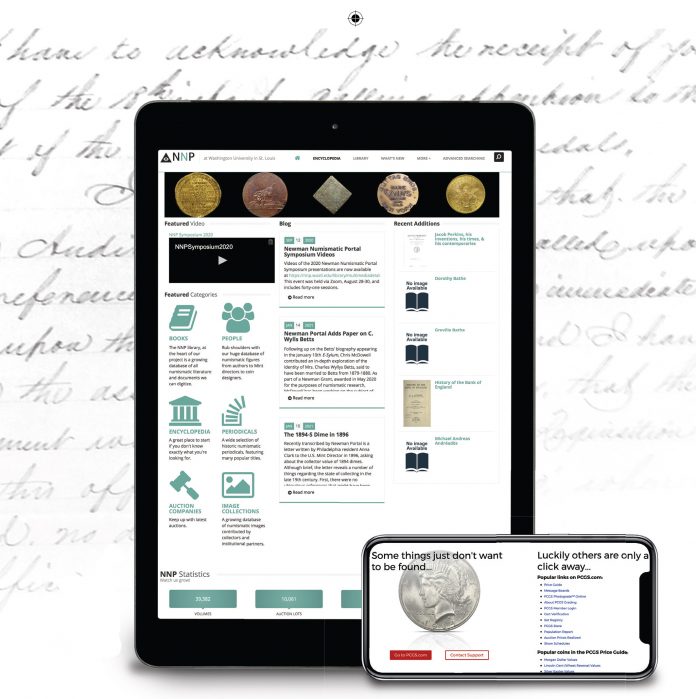
By R.W. Julian
Today in 2021, there is a wealth of information available to the researcher or avid collector wishing to learn more about a given series of coins, paper money, or medals. Compared to, say, 1953, we have at our fingertips a ready source of knowledge about a myriad of topics in numismatics.
The year 1953 was chosen as it marks the year that Walter Breen, later disgraced, began doing serious research work in the National Archives. In those days, there were no copiers, and the only way to do in-depth research was to laboriously copy documents by hand or have them microfilmed for later study. In many respects, he was a trailblazer, encouraging others to do work at the National Archives, located in downtown Washington, D.C.
Breen’s early research was funded by Wayte Raymond and John Ford, Jr., who recognized the long-term value to numismatics. The more information that is available, the more a collector will stay the course and remain an avid numismatist.
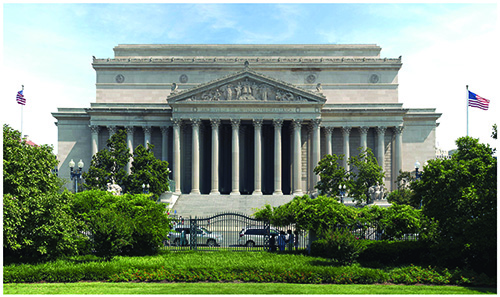
Early Research Methods
The methods of doing research from the 1950s to the 1980s changed little from the time that the controversial Breen did his groundbreaking work in a multitude of areas. He was, of course, joined during these years by other researchers who faced the same difficulties.
Not only was research a slow process, there was the added problem of travel and lodging. It has always been expensive for hotels and food in the district, significantly adding to the cost of doing research at the National Archives in those days.
Although the COVID–19 pandemic at present means that on-site research at an archives facility is not possible, one of these days it will be feasible. Such facilities can be found at Washington, Philadelphia, Denver, and San Francisco, to name but a few. The San Francisco archival holdings include the records of the mint in that city as well as numerous other West Coast government documents.
The same remark about the current pandemic holds true for the other sources of numismatic information discussed here. It is not feasible at present, for example, to visit the American Numismatic Society in New York or the American Numismatic Association in Colorado Springs to do research in person.
Working Within Access
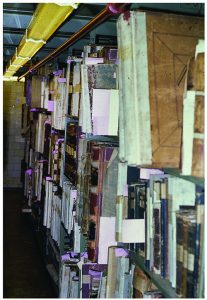
There is an odd caveat connected with doing research in the mint papers at the National Archives or one of its branches. In 1947, the Philadelphia Mint was supposed to turn over its papers dated through 1900 but chose to secretly retain a considerable quantity, perhaps more than 50,000 pages. Present mint officials have refused to make these available to researchers, a serious impediment to learning all the facts.
In the late 1970s, Mint Director Stella Hackel Sims destroyed tens of thousands of pages of 20th century records. The mint historian and researchers were not informed of this action, and it is unknown why the records were destroyed. When asked by a writer some years later as to why this was done she claimed that she could not even remember the records destruction she had ordered.
There were two other major sources of information readily available but with the same problems, especially the cost of travelling. These were, and still are, primary sources, being the American Numismatic Society in New York and American Numismatic Association in Colorado Springs. Both have superb libraries and collections of coins to examine.
Changes Spark More Interest
All of this began to change in the mid-1990s with the rise of the internet and the ability to post large amounts of information. At first, this meant individuals making use of this venue to make available detailed studies of a topic that they had studied carefully.
In the last few years, the internet has exploded with new information, making it easier for the researcher or advanced collector to study a given topic in detail.
It is not possible to describe all of the numismatic resource material available on the internet, but the key internet repositories need to be better known. The most important of these today is the Newman Numismatic Portal (https://nnp.wustl.edu), which has a large digital library in several different areas. These are readily available to anyone with a computer and internet access. There are no fees, and one can do in-depth research even from home; there is no cost except for the internet access.
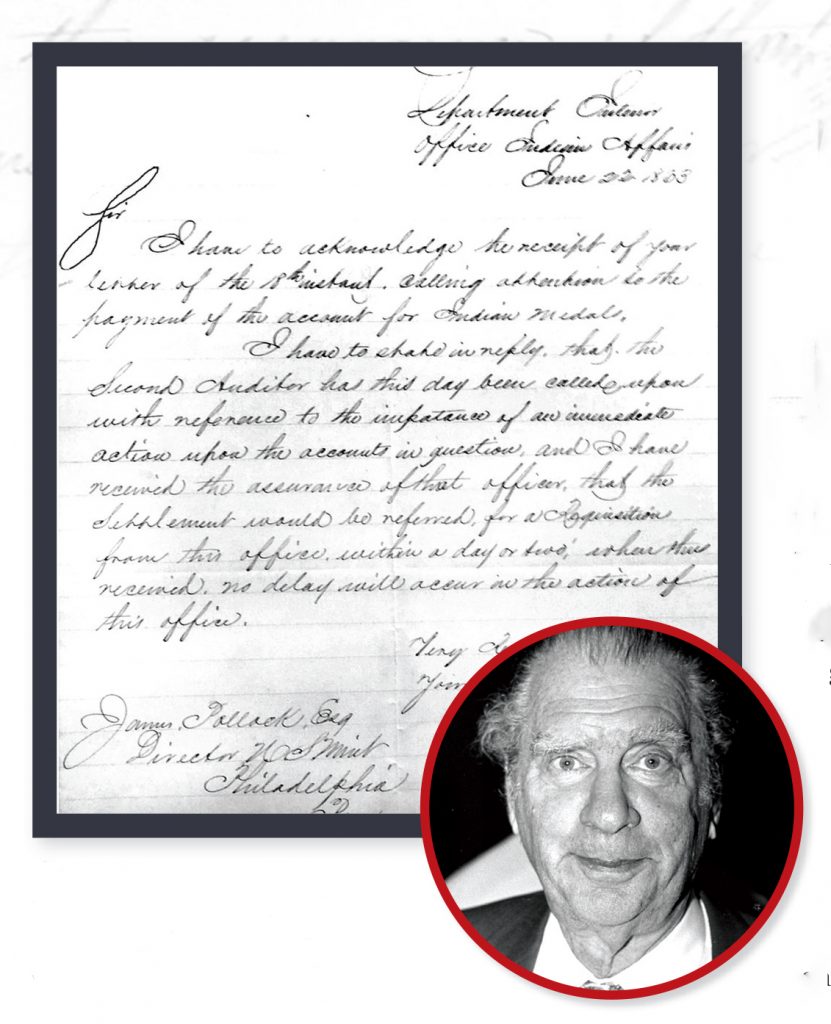
The Newman Portal was formed with a bequest from the late Eric P. Newman, who had attained the incredible age of 106 years at the time of his death in 2007. He well knew the value of research and made a large sum of money available to pursue this goal. The money is now being used to maintain the Newman Portal website as well as to provide for additional digitizing of important numismatic documentation at the Archives and elsewhere.
Eric Newman’s personal numismatic library was outstanding, and several rooms in his St. Louis home were devoted to this use. The present writer had the privilege of staying overnight at the Newman home on several occasions and saw the library first hand.
The Newman Portal is gaining in appreciation as perhaps the very best source for numismatic reference material. One such area at the Newman Portal is the collection of auction catalogs going back to the middle of the 19th century. In some cases, the posted auction catalog is unique or nearly so, and the digitization by the Portal is of special long-term value as all printed items are subject to fire and loss over a period of time.
In today’s numismatic world, there is strong interest among advanced collectors in the provenance of a given coin or medal. The careful use of the digitized auction catalogs found on the Newman Portal in many cases has enabled careful researchers to trace a given coin through a series of sales until the first such notice is reached, often in the 1860s.
The cache of auction catalogs held by the Newman Portal can also be used in another way, to determine the holdings of important collectors in the 19th century. Such studies provide growing evidence of the earlier great collections and how they were put together. The auction catalogs also provide useful information on the activities of prominent dealers from that era.
Digitization Brings the Past Alive
In many cases, for example, comments made by dealers about a particular coin or medal offered in one of the catalogs are useful. These comments are sometimes the only known information about a given specimen. In some cases, two dealers would argue with each other in their catalogs, making for amusing reading.
The second major collection of materials in the Newman Portal is the large number of original Mint documents that have been digitized among the records at the various branches of the National Archives. The site is strong in Denver Mint papers and has made serious progress with papers of the Philadelphia Mint. The known Dahlonega records have been digitized, but there is a massive number of Philadelphia documents yet to be copied, which will take years. The existing New Orleans records have only been partially digitized at the present time.
Perhaps the most important Philadelphia records to be copied to date are the General Correspondence files (RG 104, Entry 1) beginning in 1792 and going nearly through 1900 at present. There are more than 100,000 pages that have been copied and that are a gold mine for serious researchers. (The digitizing had reached the late 1890s for the General Correspondence but was interrupted by the COVID-19 pandemic that caused a temporary end to such work in March 2020.) Resumption of the work will hopefully come in the near future.
A third major aspect of the Newman Portal is the collection of biographies of past and present numismatists. Some of the names are little known, but their appearance in the Portal serves to bring them back to the forefront and obtain the credit that they deserve.
These comments on the Newman Portal are but a pale report on the large number of digitized records that can be accessed with ease via the internet. The interested collector or researcher is encouraged to visit the Newman Portal and explore the site to see the many kinds of useful information that can be gleaned.
The American Numismatic Society has long been one of the key resources for numismatists wishing to learn more about a given series of coins. The ANS has a massive collection of coins, not only of the United States but encompassing both ancient and modern around the world. The collection of Roman coins in particular is outstanding and is used by visiting scholars from Europe and other countries for detailed studies of a particular coinage – for example, under Nero or Caesar Augustus.
The ANS library is a perfect aid to the visiting researcher in that the institution makes every effort to have not only the old references but the newest in research works. The collection of auction catalogs is equally outstanding.
It should be noted that one of the goals of the Newman Portal is to digitize those parts of the ANS holdings that are not subject to copyright restrictions. Over the next several years, the amount of ANS material available on the Newman Portal is likely to grow and to lessen the need for a researcher to visit the ANS in person. This of course does not include the ANS coin holdings, as it is necessary in virtually all cases to examine coins or medals in person.
Serving Various Research Needs
The American Numismatic Association, on the other hand, attracts a different kind of researcher. The ANA library, though not as large as that of the ANS, is still a world-class reference source. The principal attraction of the ANA museum and library is perhaps the many top-flight rarities kept on hand for public display as well as examination by interested numismatists. One useful aspect of the ANA library is that current numismatic books or magazines that may be missing from the ANS library may be found at Colorado Springs.
One aspect of a numismatic resource not yet mentioned is the national coin collection maintained at the Smithsonian Institution. The facilities for research are somewhat more limited here due to staff restrictions, although it is possible with advance scheduling to do research. The library at the Smithsonian is well below the ANA and ANS in size but does contain a considerable number of useful volumes.
The principal reason for research at the Smithsonian, however, is the collection of United States coins, which is outstanding. It is, in essence, the collection of coins formerly kept at the Philadelphia Mint until transferred to the Smithsonian in the early 1920s. The collection has of course been kept up to date since that time and added to as funds permit. (Parts of the collection were laid aside at Philadelphia in the early 1800s, but after 1838, the holdings were maintained and added to on an annual basis.)
A little-known internet resource are the specialized studies posted on the internet sites maintained by PCGS (Professional Coin Grading Service) and NGC (Numismatic Guaranty Corporation). There are a considerable number of such studies on the two sites, and the enterprising researcher is well advised to sort through the postings to see what articles will be of use in his or her own essay on a given topic.
Both PCGS and NGC also provide high-quality photographs of coins that they have graded. This source is especially useful for writers wishing to illustrate an article. (Auction catalogs posted on the internet are also a prime source of good photographs of coins, medals, or paper money.)
Another little-known fact about internet resources is that some authors have posted high-quality reference works for all to use at no cost. A good example of this sharing are the books posted by Bill Bugert. These cover, in great detail and in a format easily understood, the die varieties for the Seated Liberty half dollars struck from 1839 to 1891. Another author, John Frost, has made available his work on the “double dime” (twenty-cent piece) of 1875–1878.
The present copyright rules are that books and articles printed after 1924 are off limits to public use via digitization and posting on the internet. In due course, it is likely that the date will move forward, making more works readily available.
The well-known work, A Guide Book of United States Coins, more commonly known as the Red Book, is also widely used by beginning collectors to get the basic details of a given coinage. The “Mega” versions go into more detail on given coinages, but the material found here is still condensed to a certain degree, as it is not possible to go into the myriad details wanted by specialists in a given series of coins.
It should be remembered that not all numismatic research is perfect, and the present-day writer should carefully examine all avenues of research to create a work that is as error-free as possible. Using just one source for research is not the best idea, and multiple sources are the best solution.



